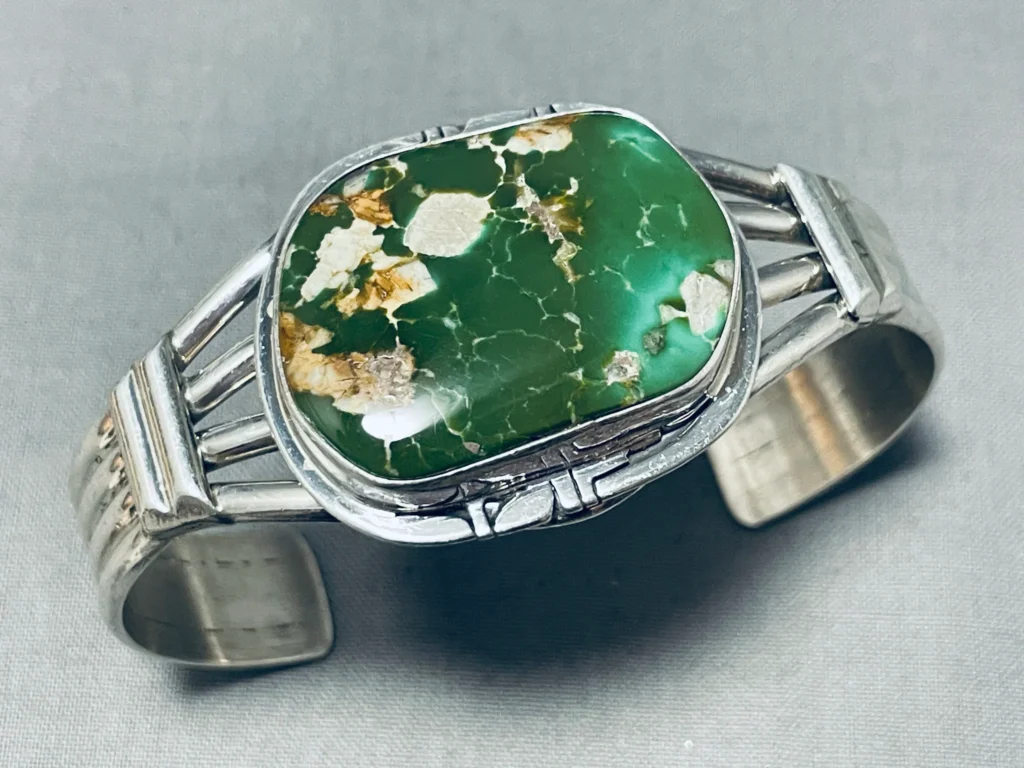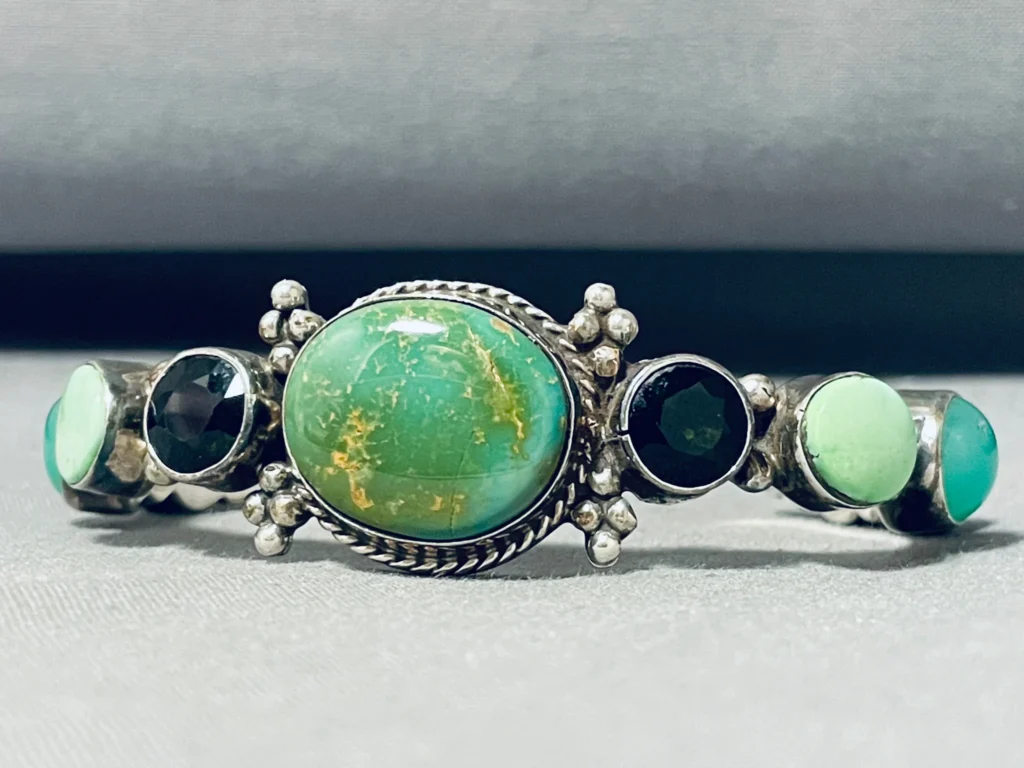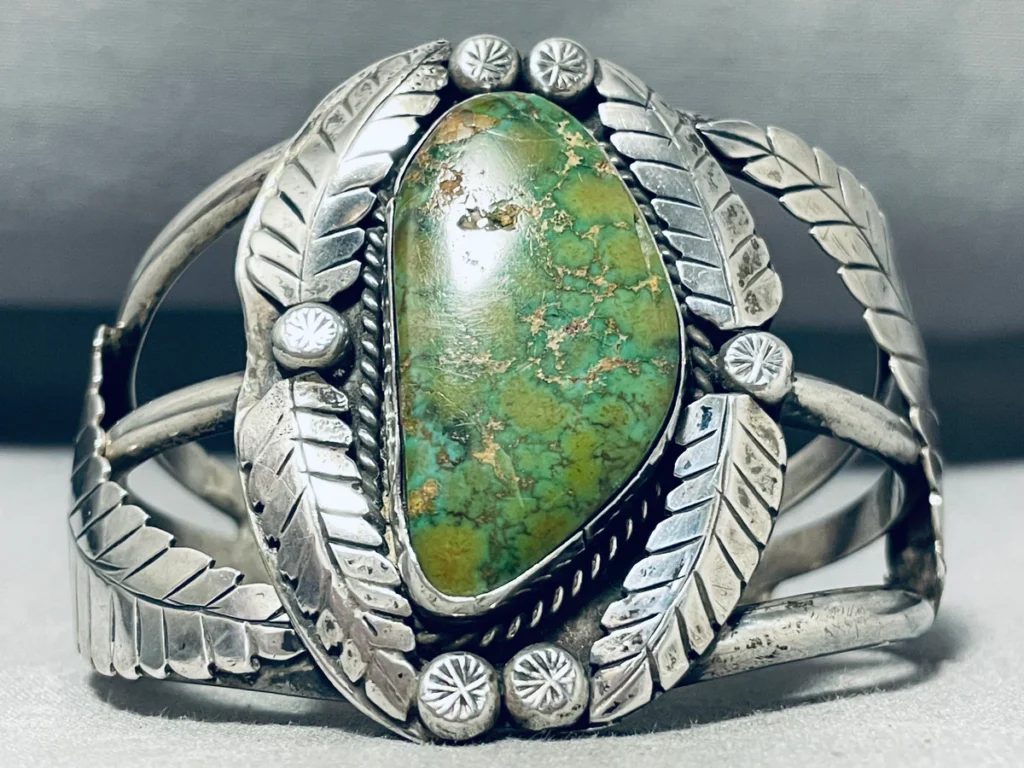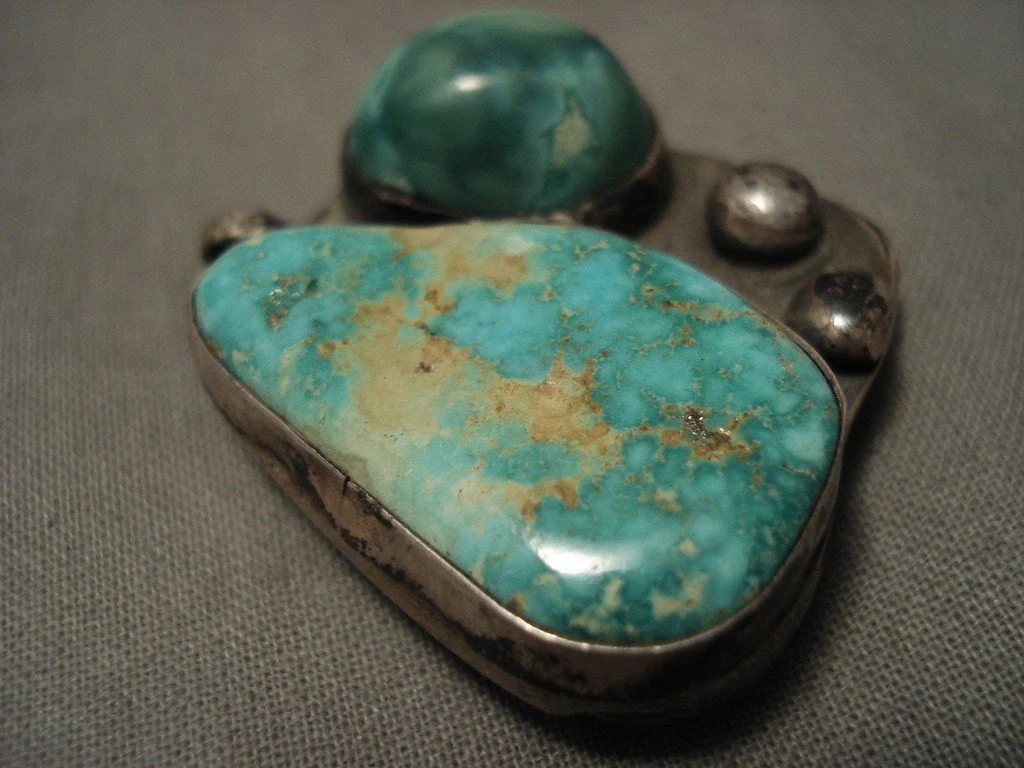Damale Turquoise is a unique and rare form of turquoise known for its distinctive characteristics, intriguing history, and vibrant appearance. Hailing primarily from Nevada, United States, this gemstone has gained prominence for its unusual color variations, mineral content, and its place in the broader history of turquoise mining.

1. Location and Mining History
Damale Turquoise is sourced from the Damale mine, located in Nevada’s mineral-rich Crescent Valley. The Damale mine is small but has produced some of the most unique specimens of turquoise. Unlike other turquoise mines that focus primarily on large-scale extraction, the Damale mine is a niche operation, and much of its production is done by small-scale miners.
The mine is situated in an area with a high concentration of other turquoise mines, including the famous Royston, Carico Lake, and Lander Blue mines. However, Damale turquoise is distinctive because it often appears in unique hues that set it apart from its neighbors.
2. Color and Appearance

Damale Turquoise stands out due to its unusual colors, which range from bright lime green to deep forest green. Unlike the sky-blue turquoise found in regions like Arizona, Damale turquoise is noted for its high zinc content, which leads to these striking green shades. This zinc enrichment in the stone’s matrix is a defining characteristic and is what gives the turquoise its signature green hues.
In addition to green shades, some Damale turquoise also exhibits blue colors, though they are often mixed with other minerals that give them a speckled or mottled appearance. The matrix, or host rock, in which the turquoise forms, can vary significantly, resulting in stones that have dramatic spider-webbing or intricate veining patterns. These matrix patterns are often dark brown or black and contrast vividly with the vibrant turquoise.
3. Rarity and Value

The rarity of Damale Turquoise is partly due to the limited production from the mine. The turquoise from this specific mine is not as abundant as turquoise from larger, more commercially operated mines, making it a sought-after stone for collectors and artisans alike.
Given its unique color range, Damale turquoise is particularly valuable to jewelers and lapidaries looking for something beyond the typical blue varieties of turquoise. The vivid green stones with spider-webbing or matrix patterning can fetch higher prices due to their rarity and striking visual appeal.
4. Mineralogy and Composition

Turquoise is a hydrated phosphate of copper and aluminum, but in the case of Damale turquoise, the higher zinc content in the region’s geological makeup significantly affects the stone’s color and properties. Zinc in turquoise tends to push the color spectrum from blue to green, making Damale one of the finest examples of green turquoise available.
Besides zinc, Damale turquoise can also include traces of other minerals like iron and manganese, which contribute to the different matrix colors. The presence of these elements leads to the intricate and highly detailed veining patterns that many collectors find desirable.
5. Uses in Jewelry and Art

Damale Turquoise is favored by artists and jewelers who value its rarity and color diversity. It is often set in sterling silver, with both contemporary and traditional designs showcasing its beauty. In Native American jewelry, turquoise holds great cultural significance, and while blue stones are traditionally more common, the green hues of Damale turquoise offer a fresh aesthetic while maintaining the stone’s spiritual and historical relevance.
Artisans often prefer the pieces with intricate webbing for statement jewelry such as rings, necklaces, and pendants, while simpler, solid-colored stones may be used in more minimalist designs.
6. Spiritual and Cultural Significance

Like other types of turquoise, Damale turquoise holds spiritual significance for many cultures, particularly in Native American traditions. Turquoise is considered a stone of protection, wisdom, and healing. The green varieties of turquoise, like those found at the Damale mine, are thought to have additional properties, such as enhancing spiritual growth, balance, and vitality.
In modern metaphysical circles, Damale turquoise is believed to help individuals tap into their inner creativity and inspire communication. Its soothing green tones are also associated with the heart chakra, promoting emotional healing and tranquility.
7. Market Trends and Popularity
Though not as widely known as blue turquoise from Arizona or New Mexico, Damale Turquoise has been gaining popularity in recent years due to its unique aesthetic and rarity. Jewelry designers who are looking for distinctive materials have increasingly turned to Damale as a way to differentiate their work from pieces made with more common types of turquoise.
The rising interest in green turquoise, in general, has also contributed to the growing demand for Damale stones. As consumers seek out ethically sourced, one-of-a-kind materials, niche mines like Damale have become important sources for fine jewelry and bespoke pieces.
8. Care and Maintenance
Turquoise is a relatively soft stone, with a Mohs hardness of around 5-6. As such, Damale Turquoise requires special care to maintain its beauty. It is best to avoid exposing the stone to harsh chemicals, extreme temperatures, or prolonged exposure to direct sunlight, as these can cause the stone to discolor or become brittle.
To clean Damale turquoise, simply use a soft cloth and mild soap if necessary. Avoid ultrasonic cleaners or steam cleaning, as these can damage the stone’s surface or cause cracks to form.
Conclusion
Damale Turquoise is a rare and beautiful gemstone, distinct in its green hues and intricate matrix patterns. Its unique mineral composition, combined with the limited supply from the small Nevada mine, makes it a prized material for collectors and artisans alike. Whether used in traditional jewelry or contemporary art, Damale turquoise continues to captivate those who appreciate its beauty, rarity, and the rich history that accompanies it.




































